Cull of the wild: Calls for action grow over crocodile attacks
John Peiti never saw the crocodile that killed his long-time friend — the third such death in Queensland this year. What has surfaced is a fraught debate as croc numbers soar.
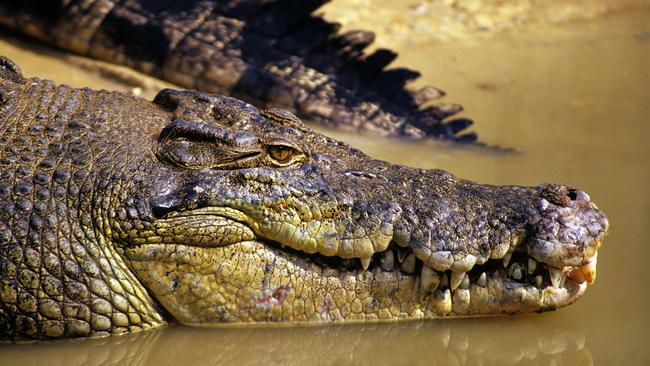
John Peiti never saw the crocodile that killed his long-time friend, Cape York publican Kevin Darmody, last month. Peiti heard Darmody, obscured by trees and the winding, undulating bank of the Kennedy River, yell, and he saw a heavy splash in the water, but that was it.
“It’s like he disappeared off the face of the earth,” Peiti says.
It took until May 3, four days after the incident on Saturday, April 29, for him to get a definitive answer about what had happened to his mate.
A necropsy of one of two saltwater crocodiles shot by wildlife rangers about 1.5km upstream from where Darmody disappeared revealed human remains inside the 2.8m animal. A second necropsy later found remains inside a 4.1m crocodile. It is the bigger, male saltie that experienced wildlife officers from Queensland’s Department of Environment and Science believe killed Darmody.
The remaining mystery is how the experienced fisherman, who was well aware of the danger posed by the waters of northern Queensland, ended up in the river and in the jaws of a crocodile.
On the morning of the attack Peiti had been fishing for barramundi with other friends at Kalpowar Crossing in Lakefield National Park. They were joined later by Darmody, 65, who had spent the morning working at his pub in Laura, 310 northwest of Cairns, preparing for the busy tourist season ahead.
They’d been friends for 20 years and Peiti, a racehorse trainer from Moruya in southern NSW, had spent the past week visiting Darmody, known as “Stumpy” for his short stature.
After catching “more barra than (they) needed”, Peiti got in the car with Darmody for the hour-long drive back to Laura.
They made good ground compared with the others, who were towing a boat, and decided to pull over for a quick lure flick at Kennedy Bend, a popular fishing and camping spot.
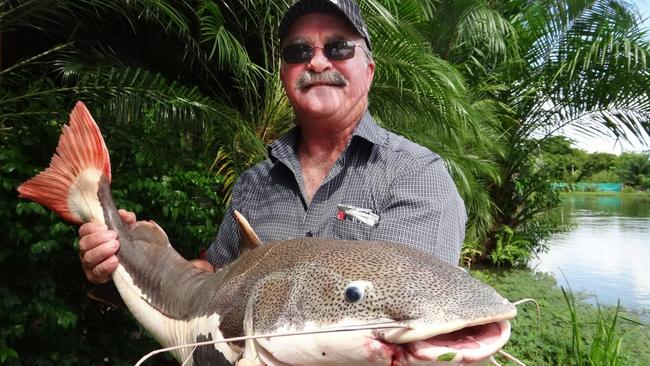
“We pulled in and there’s a croc sitting straight out on the sandbar. It was about 3m, a real black croc,” Pieti says. “Stumpy said: ‘That’s nothing, there’s a real big bastard in here, he’s the boss of this part of the river.’ ”
The croc slid into the water and the pair, spaced about 50m apart on the riverbank, began fishing.
“I grabbed a rod and by the time I’d flicked (a lure) once, I heard Kevin roaring at something,” Pieti says. “I thought, ‘That’s a bit strange.’ Kev was a bull rider, as game as a piss ant, nothing would frighten him.
“He was roaring, he wasn’t screaming. Next minute I see a big splash. I didn’t see him or a croc, nothing.”
Peiti ran through the bush to the place his mate had been fishing, covering the distance in less than 30 seconds. Darmody’s thongs sat alone on the steep riverbank. The only sign of life was a large goanna nearby. There was no hint of Darmody in the fast-running, murky green water.
Peiti suspects the goanna may have spooked his friend, causing him to fall into the water where the crocodile was waiting beneath the surface.
“My only explanation is he’s lost his footing, gone arse-over-head in the river, and there’s a croc waiting, and bang. It must have dragged him straight under because I got there pretty quick,” he says.
“It was pretty steep there and one false move and there’s no stopping yourself. There was no water on the bank that indicated something’s come out of the water. The croc never came out of the water. It’s got him as he’s gone in.”
After frantically searching along the riverbank for his mate, Peiti was joined by the rest of the fishing party. With no mobile phone reception, they drove to a ranger’s station to report what had happened.
With Darmody’s death, the third confirmed crocodile attack in Queensland this year, the fraught debate about how to manage the state’s crocodiles has resurfaced.
Calls for crocodile culls, or at least thinning their population, have been made on top of claims that their numbers have exploded in northern Queensland.
“It’s the same old thing,” says David White, who operates the Solar Whisper sightseeing tour on the Daintree River, north of Cairns.
“It’s just crazy. Unless you’re going to wipe out the whole species, there’s always going to be another one that comes along.”
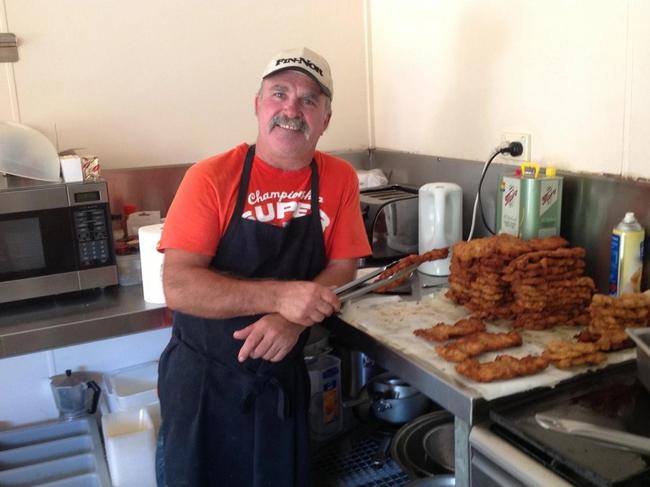
Under Queensland’s crocodile management laws, which map the state into various zones, animals deemed “problem crocodiles” are removed and taken to zoos or farms. White says it creates complacency and opens the waterway up for smaller, more aggressive crocodiles.
“The big one everyone complains about is usually the dominant male who’s sort of the peacekeeper,” he says.
“If he’s gone, the younger males will start fighting, and they’re more aggressive and more secretive. They’re not as big but they’re big enough to kill you.”
White doesn’t see the point of killing crocodiles involved in attacks, particularly when there has been no fatality.
“A crocodile that’s bitten someone is no more dangerous than a crocodile who hasn’t bitten someone,” White says.
It’s a vexed issue in northern Queensland and locals react hotly to what they perceive as double standards from southerners whose waterways are crocodile free. There’s a common refrain that it would take a crocodile swimming up the Noosa or Brisbane rivers to stir politicians into action.
Many older residents recall swimming in creeks and rivers that are now no-go zones.
“The big difference between now and when people talk about their parents and grandparents swimming is there’s no hunting,” White says.
“In those days, the ’50s, ’60s and ’70s, they were hunted almost to extinction. Even back then people still got eaten by crocodiles, even though there were bugger-all left. It only takes one.”
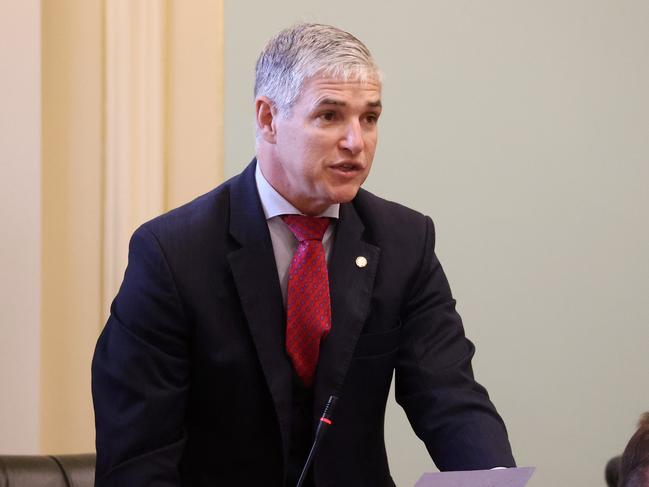
North Queensland-based Katter’s Australian Party MP Robbie Katter led the calls this week for the state’s crocodiles to be “thinned” and all crocodiles within populated areas to be removed.
“We’re calling for proper management, which would include culling,” Katter says. “I think everyone immediately jumps to thinking we want a broadscale cull everywhere. That’s not what we’re saying at all.”
Katter, who wants crocodile policy to be run by an authority based out of Cairns, not Brisbane, says the crocodile population in northern Queensland has “expanded enormously” in his lifetime and that crocodiles are moving into areas they’ve never been before.
He also does not agree with arguments that taking out crocodiles will cause ecological damage and says claims that culling will create complacency are wrong.
“You can’t tell me you can’t have an awareness campaign as well as mitigating the risk,” he says.
“No one is saying (reducing numbers) makes the water safe. Safe would assume 100 per cent reliability. That’s ridiculous. It’s all about thinning.”
Opposition Liberal National Party leader David Crisafulli, who grew up in rural north Queensland, has told reporters he wants a “return to prioritising people and actually valuing community safety”.
“That’s not happening at the moment,” he says. “Where crocodiles are in populated areas, they should be removed.
“Safety of human beings always has to come first.”
It’s a stance Peiti supports and one he says Darmody would have backed as well, despite reports from other friends saying the opposite.
Under Queensland’s crocodile management policy, crocodiles within “proximity to large urban populations” are removed, regardless of their size or behaviour. In less populated areas, only animals longer than 2m or those deemed “problem crocodiles” will be removed.
Asked if she supports calls for a crocodile cull, Premier Annastacia Palaszczuk says money is being spent on education and awareness.
“We know up north, it is croc country,” she says. “I know (Environment) Minister (Meaghan) Scanlon has put forward some proposals about extra funding for education awareness and more liaisons with councils.”
A major review of the state’s crocodile policies was released last year, with an independent panel recommending changes. It said widespread culling was “not a practical solution” to reducing the risk of crocodile attacks.
But the review did recommend the government consider removing from the wild “a modest number” of crocodiles more than 2.4m in length, in addition to the average number of crocodiles already removed each year.
The government has yet to bring in the change, which was poorly received by conservationists, and is awaiting population modelling to determine the impact of such a policy.
As the human population in croc country grows, particularly in the major regional centres of Cairns, Townsville, Mackay, Rockhampton and Gladstone, the problem becomes more acute.
Numerous crocodile population surveys in recent years have rejected anecdotal claims that their numbers have “exploded”, and a 2021 study found their numbers had grown by 2.2 per cent since 2018 but mostly had plateaued since recovery from hunting, which was banned in 1974.
Researchers estimate there are 30,000 saltwater crocodiles in Queensland – significantly fewer than the 100,000 in the Northern Territory.
The highest densities in Queensland are in rivers in the lowly populated northwest of Cape York Peninsula, and Lakefield National Park, where Darmody was killed.
According to government records, there have been 45 confirmed crocodile attacks in Queensland since the 1980s, with 13 fatalities. Their regularity has increased from four in the 1980s, to six in the ’90s, 13 in the 2000s and 12 in the 2010s. Since 2020 there have been 10 attacks, three of which happened this year.
At the beginning of last month, a 36-year-old man was badly injured by a 4.5m crocodile while spearfishing off Archer Point near Cooktown. He was dragged to the ocean floor where he gouged at the creature’s eyes before it released him.
Just over a month earlier, 37-year-old Alister MacPhee was bitten on the leg as he entered the Bloomfield River, south of Cooktown. The crocodile released him when it decided MacPhee’s rottweiler was a better target. Wildlife officers later tracked down and shot the 4.2m crocodile, which had the dog’s remains in its stomach.
The encounter, which was filmed by MacPhee, drew outrage and led to a petition, supported by Bob Irwin – father of Crocodile Hunter Steve Irwin, the renowned conservationist who died in 2006 – calling for him to be charged with an animal cruelty offence.
The department deemed no offence had been committed under its jurisdiction and MacPhee issued a statement saying he had learned his lesson.
In the Northern Territory, there have been two attacks this year. One involved a 12-year-old girl who survived after being bitten on the leg in a creek near outer Darwin.
The other was a man gathering crocodile eggs who was surprised by a large male crocodile and suffered severe damage to his leg. He survived when his mate hit the animal with a machete.
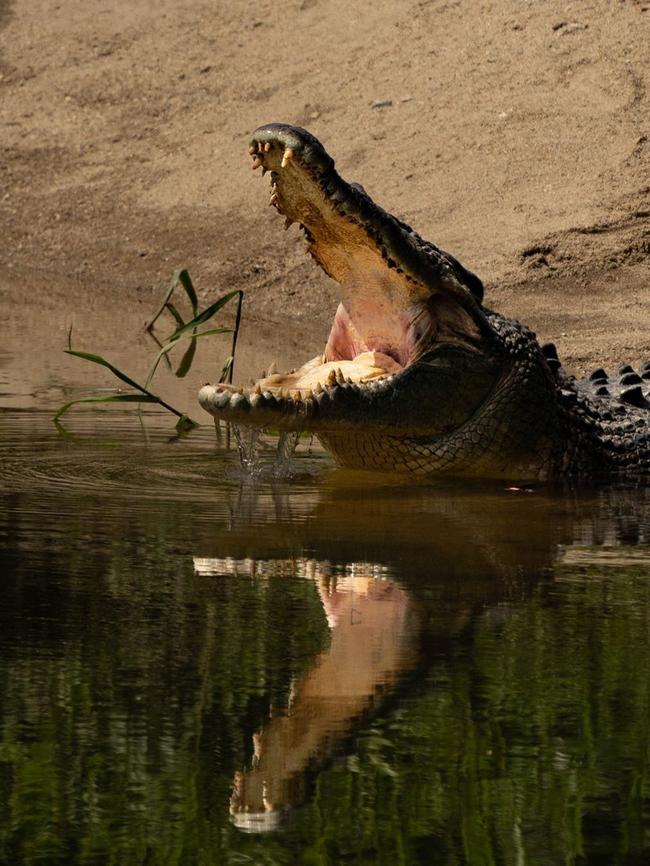
Arising from a mixture of complacency, foolishness and bad luck, the attacks reflect the difficulty in developing a policy that balances conservation with human fallibility. Speaking to journalists in Cairns this week, DES manager of wildlife operations Mike Joyce was asked if he was frustrated by the all-too-frequent interactions.
“Frustrating is not the right word,” he said. “Disappointing. It’s very disappointing that we get more of these things, but crocodiles do live in these waters, people in north Queensland do use the water, and those two things sometimes conflict.”
Were more warning signs needed? “If you’re in croc country there are crocodiles in any water,” Joyce said. “You don’t even need a sign … any waterway could contain a crocodile.”
But Joyce acknowledged that sometimes you get unlucky. “I’ve fished at Kennedy Bend … it is something you can do safely but we all make mistakes,” he said.
It’s something on Peiti’s mind on the 3000km drive home from north Queensland.
“(Darmody) knew (Kennedy’s Bend) well, he’s got some big barra out of there,” he says. “He just loved it. He died doing what he loved, too, don’t worry. He knew all about (crocodiles), he was very careful. He wouldn’t be blase about them.”
But, as Joyce says, sometimes mistakes happen.
“He’s fallen in the water before, I’ve fallen in before,” Peiti says. “If there’s nothing there, you get out. They might be down the river a bit and start coming towards your way but you get out of the water. This time it might have been waiting. Just sitting there.”








To join the conversation, please log in. Don't have an account? Register
Join the conversation, you are commenting as Logout